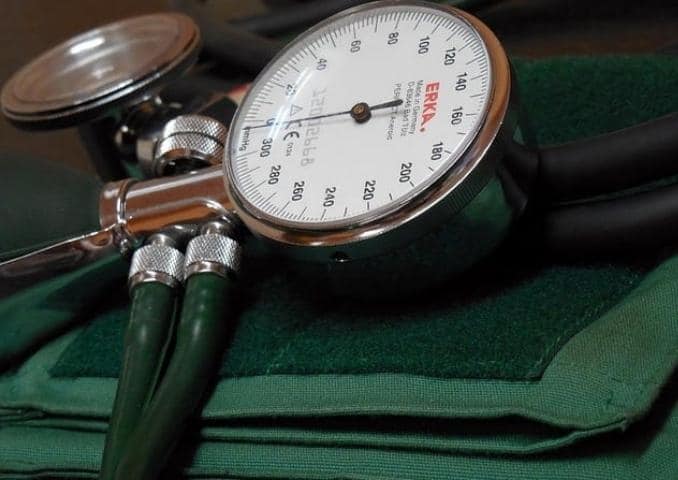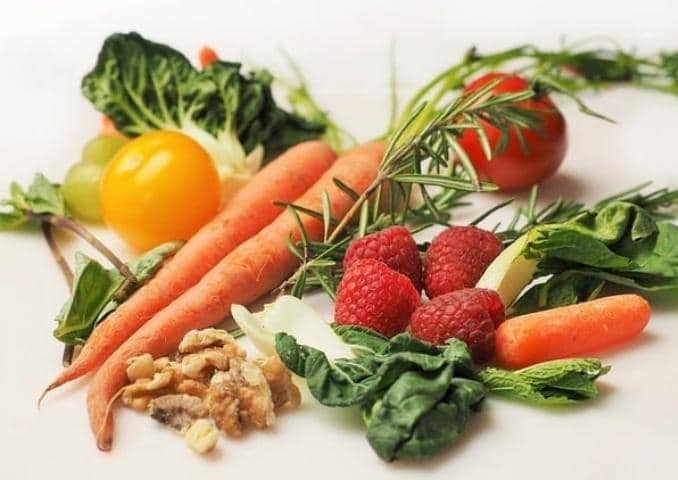
About 75 million American adults have high blood pressure while some statistics say more. That’s one in every three and that’s not good news. Having high blood pressure puts you at risk for heart disease and stroke, the leading causes of death in the United States and Canada.
Another one in three adults has prehypertension — blood pressure levels that are higher than normal but not yet in the high blood pressure range. These individuals are at a higher risk of eventually being diagnosed with high blood pressure.
Called the “silent killer,” high blood pressure was a contributing cause of death for more than 410,000 Americans in 2014, which amounts to more than 1,100 deaths a day. Only about half of those who have the disease are treating it and keeping it under control.

What causes high blood pressure? Many factors can contribute to the disease, but the main idea is that the heart has to work too hard to pump blood through the arteries, creating too much pressure on the blood vessels. The pressure level is determined by the amount of blood the heart is pumping and the amount of resistance to the blood flow in the arteries.
Imagine a fire hose used to put out a house fire. The water blasts through that hose at a high pressure, so that the spray can help douse the flames. In your body, the heart pushes blood through the arteries, which are like small hoses.
When you’re young, the arteries are healthy and open, and the blood flows through easily. As you age, and because of other factors like poor diet, overweight, tobacco use and genetics, the arteries can become narrowed and stiff, so the heart has to work harder to get the blood through them. Imagine the high-pressure water going through a fire hose that is clogged. The pressure builds up and, over time, creates tiny cracks and injuries inside the hose (or arteries), which can lead to blood vessel damage and perhaps the formation of a blood clot.
Keeping your blood pressure at a normal level is a good goal to have no matter how old you are as it can help you avoid debilitating diseases down the road. If you’ve already been diagnosed, it’s important to follow your doctor’s recommendations. However, if you have prehypertension or your blood pressure is creeping up, but not yet in the danger area, you can make changes on your own to get your numbers under control.
Even if you already have high blood pressure, there are things you can do that may help you to lower your medication dosage or get off of drugs altogether (always check with your doctor). We’ve got seven ways you can naturally balance your blood pressure without medication below.
1. Know Your Numbers
First, you need to know what high blood pressure is and be sure you’re testing yourself every six months to a year, so you know how you’re doing. If your pressure starts creeping up, test it more often. You can do that at the doctor’s office, at the pharmacy or with an at-home tester.
Blood pressure is measured in two numbers — the systolic (upper) pressure and the diastolic (lower) pressure. The systolic number indicates how much pressure the blood exerts against the artery walls when the heart beats. The diastolic number indicates how much pressure is exerted when the heart rests between beats.
Keep in mind that a single reading may not give an accurate picture of your overall blood pressure. Numerous factors can affect your blood pressure reading, including exercise, eating, stress and anxiety, smoking, alcohol and caffeine, cold temperatures, a full bladder and even talking to your nurse or doctor during the reading. Try to sit quietly for at least three to five minutes before taking your reading. Usually, about three readings taken at different times during the day are needed to figure out what your blood pressure is.
In general, here are the numbers you need to know, according to the American Heart Association (AHA).
- Normal blood pressure: Anything lower than 120 over 80
- Elevated blood pressure: 120-129 and less than 80
- High blood pressure (stage 1): 130-139, or 80-89
- High blood pressure (stage 2): 140 or higher, or 90 or higher
- Hypertensive crisis: Higher than 180, and/or higher than 120
If you have elevated blood pressure, where your readings are consistently in this range, you may be more likely to develop high blood pressure unless you take steps now to control it. Hypertension stage 1 is considered a risk factor for heart disease and stroke, and your doctor may recommend lifestyle changes and sometimes blood pressure medications, depending on whether you have other risk factors for cardiovascular disease.
Hypertension stage 2 is the stage where medications are most often recommended along with lifestyle changes to get the numbers under control, and a hypertensive crisis requires immediate medical attention.
2. Move More!
Many people have difficulty working movement into their daily lives. We spend a lot of time on the computer, in our cars and sitting down for other reasons like to eat or spend time with friends. Exercise is key for keeping blood pressure levels under control.
Several studies have shown that exercise can help prevent hypertension and may even help lower numbers once you have it. In 2013, researchers reported that evidence “strongly supported” a role for physical activity in the prevention of hypertension, although they couldn’t be sure which type of exercise was best.
In 2016, researchers reviewed 65 studies and found that exercise provided significant reductions in blood pressure levels, with longer exercise sessions having a larger impact. The effects lasted for hours following the workouts. In another review of 13 studies the following year, scientists found that aerobic exercise was so effective against blood pressure that it “may be a potential nonpharmacological treatment for blood pressure improvement” in patients with hypertension.
In 2017, the National Institutes of Health reported that vigorous exercise, when done regularly, could help reduce the risk of hypertension not only in white (Caucasian) people but in African Americans too, who are at the highest risk of the disease compared to other racial and ethnic groups.
3. Watch What You Eat
Diet has a huge effect on blood pressure, so much so that decades ago, scientists developed the “DASH” diet to help patients get their numbers under control. That diet focused on reducing sodium and increasing magnesium, calcium and potassium — all minerals that are important in maintaining healthy blood pressure. Studies showed the diet was very effective, and it remains in use today.
Recent studies have also shown that some foods have the power to lower blood pressure numbers naturally. These include berries, yogurt, spinach, oatmeal, garlic, pistachios and pomegranate juice. On the whole, however, it’s eating a healthy diet with more fruits and vegetables, whole grains, lean proteins and healthy fats that do the trick.
Whether you need to lower your sodium levels is a topic of debate in recent studies, but most health organizations still recommend a low-sodium diet for those with high blood pressure.
By the way, you may also want to cut back on the amount of sugar you’re consuming. Recent studies indicate that sugar may be particularly harmful when it comes to blood pressure. We know that too much sugar can lead to weight gain, and being overweight or obese are risk factors for high blood pressure. However, recent research also shows that sugar impacts blood pressure independent of weight gain.
In one review, for example, scientists found 12 studies reporting sugar affected blood pressure. In a 2017 study, researchers stated that “added sugars, particularly fructose, may increase blood pressure and blood pressure variability” and suggested that sugar may be more dangerous than salt when it comes to cardiovascular disease.
More research needs to be done but, for now, health experts recommend you watch out for sugar in your diet. Remember those seemingly innocuous items like bread, soup, yogurt, condiments, cereals and other foods can be high in sugar. Choose low-sugar options instead.
4. Practice Daily Stress Relief
Stress and blood pressure — there seems to be a link between the two. According to the Mayo Clinic, stressful situations can cause your blood pressure to spike temporarily but, usually, once the stress disappears, blood pressure returns to normal.
In today’s world, however, many of us experience stress on a more regular basis. Could such chronic stress increase the risk of high blood pressure? Scientists aren’t sure, but they have some evidence that it could.
In 2009, researchers reported that chronic exposure to stress “may have an influence on increased blood pressure.” They reviewed six studies and found that individuals who had stronger responses to stressful tasks were 21 percent more likely to develop a blood pressure increase compared to those with less strong stress responses. An earlier study also indicated that work stress, which has been associated with an increased risk for heart disease, could also cause elevated blood pressure levels.
In another study review, scientists found that chronic stress and particularly an inability to adapt to stress were likely causes of sustained high blood pressure. In other words, it’s not so much the stress itself as our response to it that determines whether it affects our health.
That means it’s important to have activities in your daily life that help you reduce stress. Spending time with friends and loved ones, walking the dog, exercising, journaling and engaging in hobbies you enjoy are likely to help you feel calmer again.
5. Strike a Pose
Speaking of stress relief, yoga is one of the best activities you can choose. According to some recent studies, because it involves deep breathing and stretches, it helps create total-body relaxation that not only dissipates stress but lowers blood pressure.
In one 2013 study, for example, researchers found that people who practiced yoga two to three times a week experienced an average drop in blood pressure from 133/80 to 130/77. In contrast, the decrease was smaller in those who ate a special diet but didn’t do yoga (134/83 to 132/82).
The change was small but significant and, since yoga helps to reduce stress too, you can be getting double the effect in one routine. A later study found even more evidence that yoga can help. Participants with hypertension who practiced yoga every day for one hour for three months again dropped their average diastolic blood pressure by about 4.5 millimeters of mercury (mmHg). The control group, who participated in aerobic exercise and dietary changes, did not experience any significant changes.
Lead author Dr. Ashutosh Angrish noted that even small reductions have the potential to decrease the risk of coronary heart disease and stroke.
6. Consider Vitamins & Minerals
Certain vitamins and minerals are commonly recommended to help treat high blood pressure. These nutrients are key to the processes that help the body maintain healthy circulation, and if you’re not getting enough, that could part of the reason why your blood pressure has gone up.
Always check with your doctor before taking supplements, and keep in mind that food sources are always superior to pills.
- Vitamin D: Studies have shown that people deficient in vitamin D are more likely to have high blood pressure, and many people are deficient these days because we’re avoiding the sun. You can get some vitamin D from your diet, but not enough to meet your daily requirement. Try 15 to 30 minutes of unprotected sun exposure a day, or supplements of 1,000 to 4,000 international units (IUs) a day.
- Potassium: This mineral helps balance the amount of sodium in the body, so blood pressure remains normal. Try 500 to 1,000 mg per day to drop blood pressure levels over a period of about eight weeks, or maintain with about 100 mg/day. Good food sources include melons, orange juice, figs, green vegetables, tomatoes, potatoes and seeds.
- Magnesium: This mineral regulates enzymes that help relax blood vessels. Studies have shown that getting enough magnesium can help lower blood pressure. Try 500 mg/day. Good food sources include fresh green veggies, figs, corn, apples, nuts and seeds and soybeans.
- Calcium: Calcium is another key nutrient in maintaining healthy blood pressure, but think twice before taking supplements. It’s better to go for food sources like low-fat dairy, yogurt, almonds, seeds, cheese, beans and whey protein.
- Coenzyme Q10: This is a unique nutrient that performs a wide range of functions in the body, one of which is to help promote healthy blood pressure levels. Try 50 to 360 mg/day, depending on the severity of your blood pressure. About 100mg/day is good for regular maintenance. Look for the softgel form as it absorbs into the body more easily.
- Omega-3 fatty acids: These help reduce inflammation and may also help reduce blood pressure. Try 1,000 to 3,000 mg of fish oil a day. Good food sources include fatty fish, nuts, flaxseed, olive oil, chia seeds and anchovies.
7. Drink Some Hibiscus Tea
Hibiscus has been shown in studies to help lower blood pressure. In a 2013 review, researchers found that the consumption of hibiscus extract reduced blood pressure consistently in adults with hypertension. In fact, it was as effective at lower levels as the blood pressure medication Captopril, although less effective than Lisinopril. The herb also lowered total cholesterol levels, LDL “bad” cholesterol and triglycerides. Researchers concluded that hibiscus was “promising as a treatment” for hypertension.
Other herbs have also shown in studies to have some positive effects on blood pressure. Always check with your doctor before taking them as some can interact with medications you may be taking.
- Ginkgo biloba
- Cinnamon
- Hawthorn
- Basil
- Cat’s claw
- Cardamom
- Garlic
- Celery seed
For your comprehensive guide to lowering your blood pressure, check out the 14-Day Healthy Blood Pressure Quick Start Program, here!






